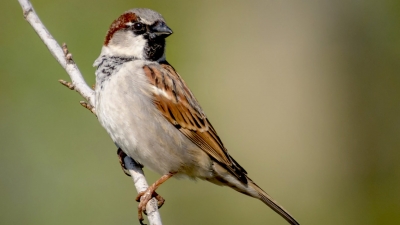
Sparrow serves the ecosystem of the earth. Sparrows mostly prefer seeds of millet, thistle, weed and sunflower seed. However, they also eat fruits and berries. During this process, sparrows spread seeds to places away from the fruit tree. This is important for germination of the seeds, because if the seeds fall close to the parent plant, they would have to compete for nutrition with the mature plant. This would reduce the chance of germination of the seed as well as growth of the plant once the seed germinated. By spreading seeds, sparrows help the survival of many plants that are the producers in an ecosystem.
Although primarily seed-eaters, sparrows also feed on small insects and worms such as caterpillars, beetles and aphids. Some of these creatures destroy certain plants. Sparrows keep their population in check; otherwise, the insects would have eaten certain plant species to extinction. Here also sparrows play an important role in preserving the ecosystem.
Most birds of prey, such as eagles and falcons, eat other smaller birds. Snakes, which are also secondary consumers, are known to eat sparrows. For example, sharp-shinned hawks prefer sparrows for food.. Hence by providing food for the secondary consumers, sparrows play an important role in their survival and in preserving the ecosystem.
Picture Credit : Google





